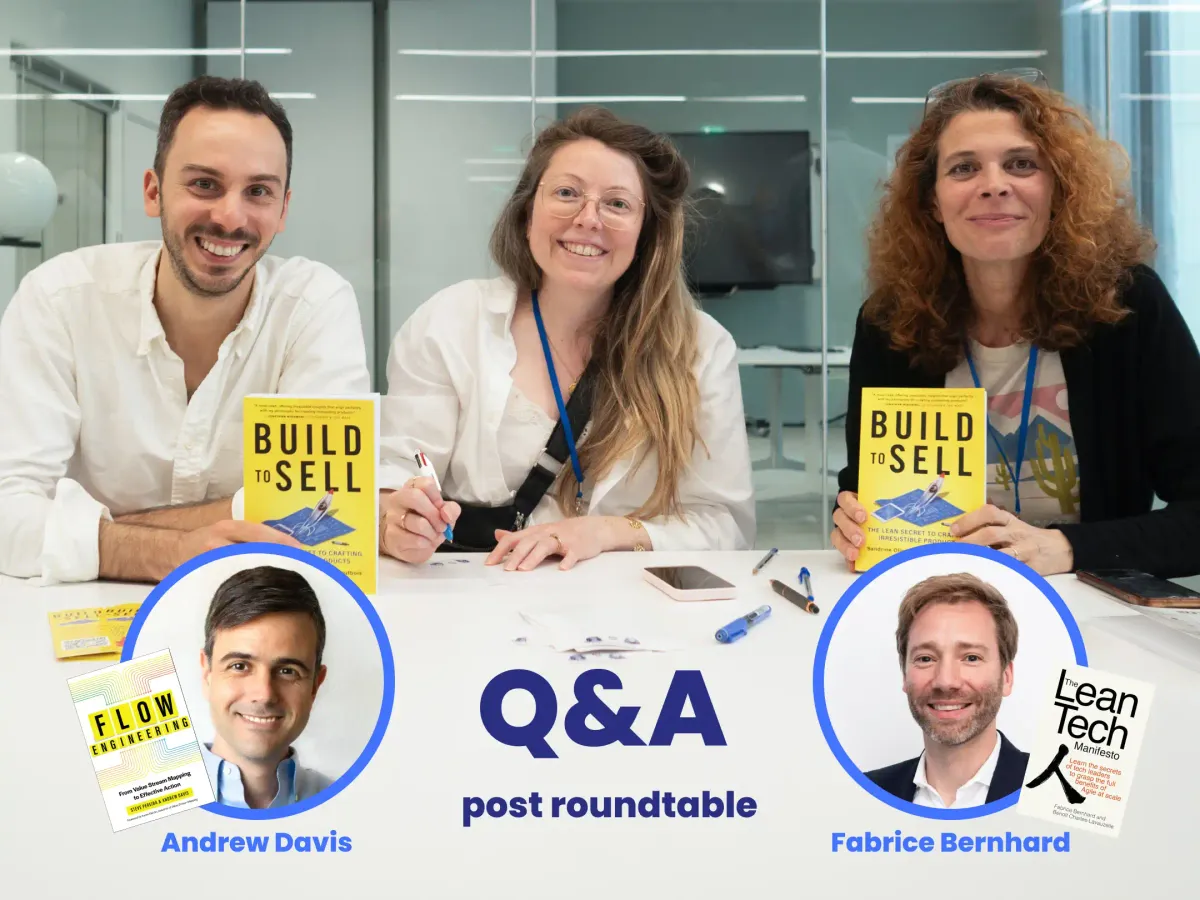Community Q&A, first edition
In this edition we address two points raised by Olaaf and Julien about craftsmanship and client key preferences

We were absolutely thrilled to participate in two lively roundtables on November 4th, brilliantly hosted by Andrew Davis, author and CPO of AutoRABIT, and Fabrice Bernhard, author and co-founder of Theodo. We love the great insights that came out of the discussions about how to build emotion-centric products, escape the trap of feature frenzy, conceive profitable and scalable solutions, and make our concept stand out as a must-have investment.
Several of you shared fascinating insights, and in this piece, we’ve highlighted two thought-provoking contributions from Julien and Olaf.
Julien Masson, CEO of X-MAKERS, France, asked if a “client key preference” is the same as a “need”?
A need is a problem that a product is designed to solve, but a client preference is something else entirely. A key preference represents one of the non-negotiable quality characteristics that customers within a specific segment use to choose a solution to their problem. For example, let’s say I’m looking for bread. If my need is to grab some on my way home from work, my key preferences might be a "bakery that’s close by" and "open late". But if I’m preparing for a lazy Sunday brunch, I’d prioritize "nice crisp" and "organic ingredients" instead.
These preferences shift based on the problem (or need) I’m trying to solve, what we often call the "Job to Be Done" (JTBD). Customers essentially "hire" a product to perform a specific function or solve a problem in specific circumstances. Hence, the same person can have multiple needs or JTBDs.
So, before deciding what features to modify or add, it’s crucial to identify your product’s non-negotiable characteristics and understand how well it performs compared to competitors on these same criteria. This approach helps pinpoint where your product may fall short and highlights where to focus improvements that truly matter to your customers.
Olaaf Rossi, CTO and Solutions Architect in New York, USA, shared an interesting observation about the fear of “craftsmanship” at his company:
At his company, the term "software craftsmanship" has become a taboo, almost a "nuclear word." Leaders perceive it as synonymous with slowing down progress, making it a concept they’re hesitant to embrace. The underlying question is: how can we convince management that quality is the key to going faster?
Scaling craftsmanship while maintaining speed is like expanding a restaurant. At first, it’s a cozy, creative space where every dish is hand-crafted with care. As demand grows, you scale up—more junior chefs, more volume, cheaper ingredients, etc. But if you lose the soul of those original dishes, you risk becoming just another generic brand. There are three keys to avoiding this:
- The Chef keeps the spirit of craftsmanship alive by mentoring junior team members, helping them embrace excellence in their work
- They make sure quality is built into every process so that everyone can self-check, learn, and keep improving
- On top of that, they’re always looking for ways to add value by cutting out waste—and it all starts with visualizing and really understanding costs.
Startups face a similar dilemma. The creative "honeymoon phase" often gives way to rapid growth, where speed and processes dominate. This shift risks sidelining the artisan spirit of the early days, leading to technical debt, inefficiencies, and slower delivery. Michael Ballé, in his bestseller The Lean Strategy, calls this phenomenon the “iron law of scaleups,” where companies either stagnate in maturity or rekindle innovation to thrive.
Consider Apple in 1997: on the brink of bankruptcy, it refocused on craftsmanship under Steve Jobs’ leadership. But not all CEOs are Steve Jobs, and not all companies get second chances like Apple.
The key is to do this continuously from the start, to build resilience and avoid being caught off guard by changing market conditions. A lean strategy focuses on building quality into the product from the start, which minimizes unnecessary costs and creates clarity. By showing management that craftsmanship and quality reduce bugs, chaos, and expenses, you demonstrate that it is an engine for growth and scale. This is amplified with the introduction of the Chief Product Engineer role, who ensures that meeting client needs aligns with delivering business value and creating a well-built product. And, just like a great restaurant, you can scale while preserving the unique qualities and speed that set you apart from the beginning.